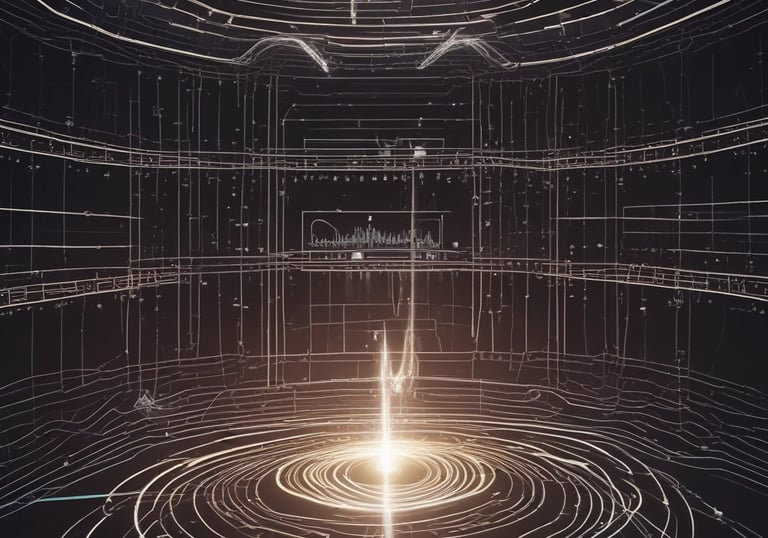Unified F-Fabric Theory of Space-Time
A new physical framework describing space-time as a resonant fabric of interconnected F-nodes — where energy, matter, and gravity emerge through spectral coherence and phase resonance.
This website presents the F-Fabric Theory — a new framework that seeks to describe the Universe as a single, coherent system. For decades, physicists have been trying to develop a unified model that could explain all phenomena — from quantum fluctuations to cosmic structures. Attempts such as String Theory and Loop Quantum Gravity have reached a dead end, turning into intricate mathematical constructs with little connection to observable reality.
The F-Fabric Theory offers a different approach: it views space-time as a resonant informational field from which matter, energy, and gravity naturally emerge. All levels of physical reality — from the microscopic to the cosmological — are linked through the principles of resonance, spectrum, and field density. Our goal is to show that nature follows not a set of separate laws, but a single principle of informational coherence and resonant equilibrium.
The Framework
Three perspectives — one field
Philosophical Aspect
Explores the nature of existence, information, and causality through the lens of resonance and coherence.


Mathematical Core
Formal equations describing F-fabric dynamics, resonance metrics, and the emergence of physical constants.
Application of F-Fabric Theory to the universe — explaining dark matter, cosmic expansion, and structure formation.
Cosmological Structure




Simulations & Visualizations
Observe the dynamics of the F-fabric — from quantum-scale resonance to the formation of the cosmic web.


How the F-Fabric Theory Differs from Existing Models
General Relativity (GR)
General Relativity (GR) describes gravity as the curvature of space-time caused by mass and energy. F-Fabric Theory: treats gravity not as curvature, but as a gradient of energy density within a resonant informational fabric.
Quantum Field Theory (QFT)
Quantum Field Theory (QFT) explains particles as excitations of separate quantized fields on a fixed background. F-Fabric Theory: unifies all fields into one continuous resonant medium — space-time itself becomes dynamic and informational.
String Theory
String Theory proposes that everything consists of tiny vibrating strings in higher dimensions. F-Fabric Theory: eliminates unobservable dimensions; vibration arises naturally from resonance within the fabric, not from fundamental strings.
Loop Quantum Gravity (LQG) quantizes space itself into discrete spin networks. F-Fabric Theory: retains continuity — quantization appears as stable resonance modes, not as physical “chunks” of space.
Loop Quantum Gravity (LQG)
Holographic Principle / Quantum Information Models
Holographic Principle / Quantum Information Models view the universe as information encoded on a boundary surface. F-Fabric Theory: agrees that information is fundamental, but treats it as volumetric and dynamic — a living continuum, not a projection.
Disclaimer
The author is not formally educated in mathematics or physics.
All theoretical foundations, including mathematical formulations, were developed in collaboration with two AI assistants — ChatGPT and Grok. The author explored available scientific data, guided by intuition and observation of the natural world, and provided conceptual input for AI-based analysis and modeling.
While every effort has been made to ensure internal consistency, possible inaccuracies or simplifications may exist. The author does not claim mathematical rigor or definitive correctness of all formulations. The presented theory should be regarded as an exploratory framework — an open invitation for verification, refinement, and discussion by the scientific community.
Contact the Author
E-mail:
f.fabric.theory@gmail.com